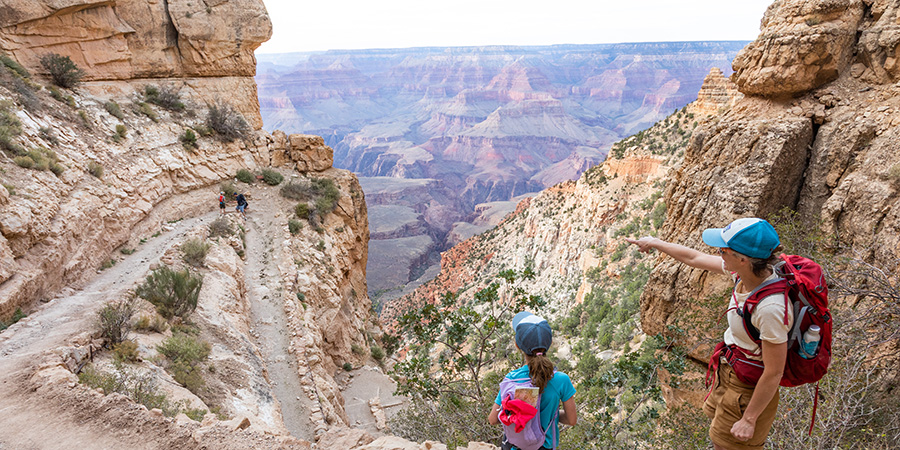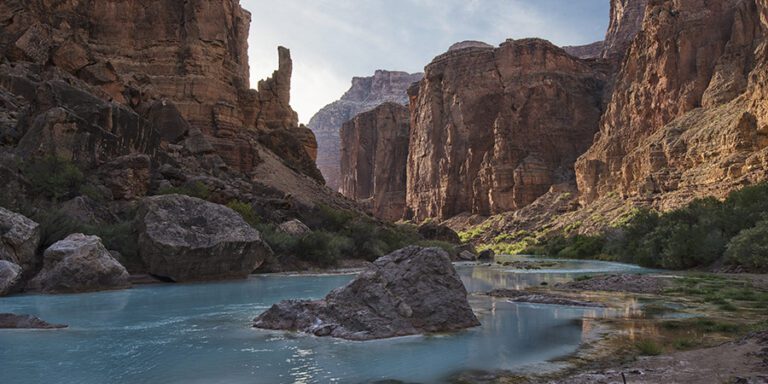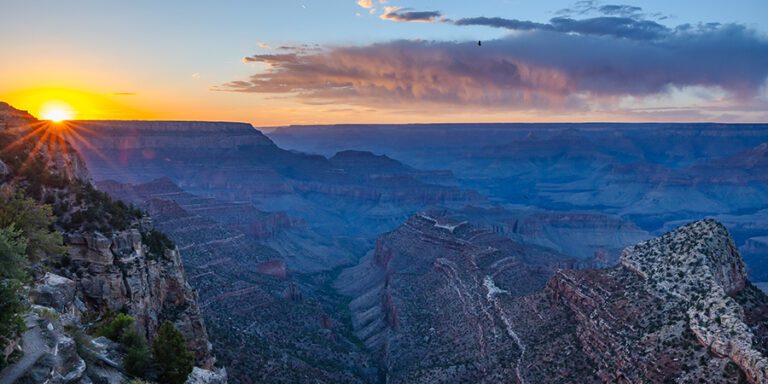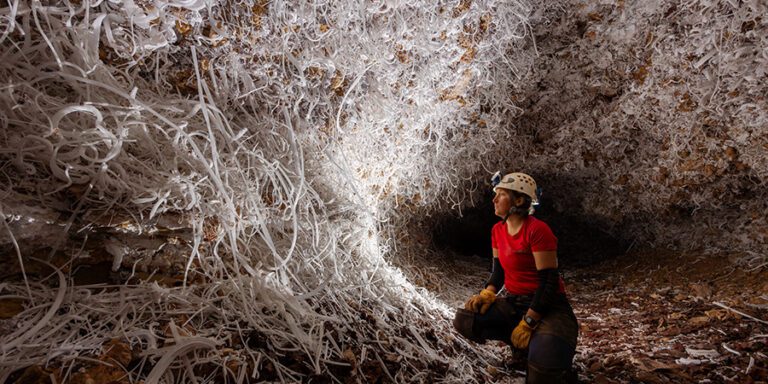
The more you learn, the deeper the Grand Canyon gets.
From the history of its many rock layers to the voices of people whose ancestors have called the canyon home for hundreds of generations, there’s so much to learn about the Grand Canyon. Whether you’re a teacher at the elementary school, high school, or college level, the parent of a curious kid, or a student of history yourself, here are some educational resources that can help you plan a lesson, inform a field trip to the Grand Canyon, and learn more about the natural and cultural history of the canyon.
We’ll even send you a free DVD and educational booklets to help support learning about the canyon.
Native voices of the Grand Canyon
The human history of the Grand Canyon traces back to time immemorial. And Native American people today continue to maintain strong cultural connections to their ancestral lands in and around the Grand Canyon. You can hear firsthand from Jim Enote (Zuni), Nikki Cooley (Diné), Leigh Kuwanwisiwma (Hopi), Coleen Kaska, (Havasupai), and Loretta Jackson-Kelly (Hualapai) about their connections to the Grand Canyon in an interactive story map, “Voices of the Grand Canyon.” There’s also a 12-minute film, and an educational booklet that go with it.
If you’d like a free DVD, booklets, and discussion questions to share, we’d be happy to send some along. Request a screening kit
Lifeways of the Little Colorado River
The Little Colorado River is the largest tributary to the Colorado River inside the Grand Canyon. It’s known for its milky turquoise waters and humpback chub, a native fish with a camel-like hump. Native peoples have lived, farmed, collected salt, and maintained cultural practices and traditional lifeways along the Little Colorado River for generations.
Learn about the cultural history of the Little Colorado River in the interactive story map, “Lifeways of the Little Colorado River.” Or watch interviews with tribal members across the region in this video showcase. There’s also an accompanying booklet with an incredible map of the river from its headwaters in the mountains to the bottom of the Grand Canyon.
If you’d like free copies of the booklets and map for your students, we’d be happy to send you some. Get in touch here
Grand Canyon rock layers — a geology lesson
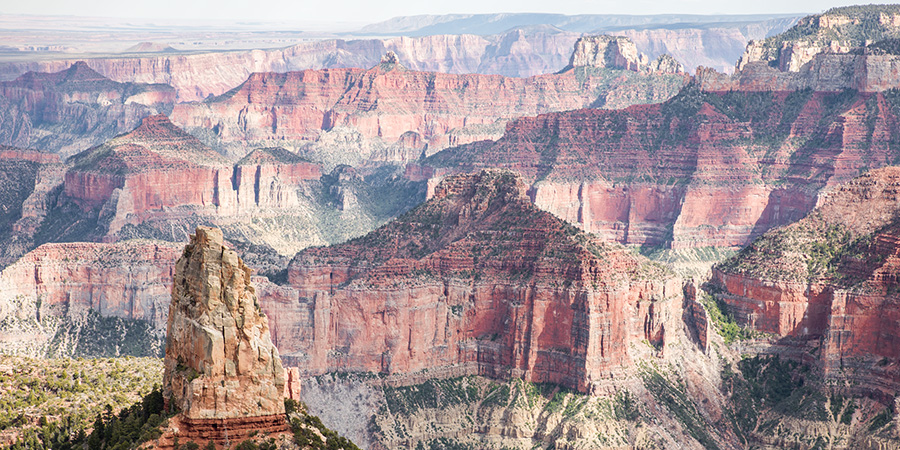
For a simple mnemonic device to help you teach the Grand Canyon’s rock layers and a brief overview of the Grand Canyon’s geology, check out our Geology Rocks: Grand Canyon Rock Layers blog. Grand Canyon National Park also has a great intro to Grand Canyon geology, complete with questions and answers.
If you’re teaching more advanced students, the U.S. Geological Survey digs a little deeper with Geology of Grand Canyon National Park, including the question of the Great Unconformity. Visible as a horizontal layer filled with pebbles sitting atop a vertical layer of rock, the Great Unconformity marks the spot where hundreds of millions of years of rock are missing between the two layers.
Grand Canyon fossils
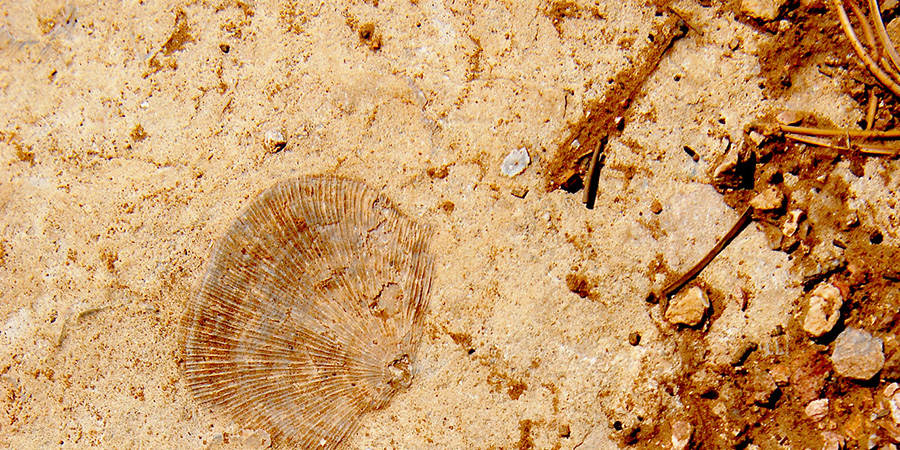
There’s also a fascinating catalogue of fossils found in the Grand Canyon, including many marine fossils from millions of years ago, when the lands of the Grand Canyon were underwater. You’ll find a good summary of Grand Canyon fossils on our blog.
New fossils are often discovered in the canyon, including these 313-million-year-old fossil tracks found by a Norwegian geology professor hiking with his students. The fossils were only revealed after a cliff collapsed, making them visible.
Animals and plants of the Grand Canyon
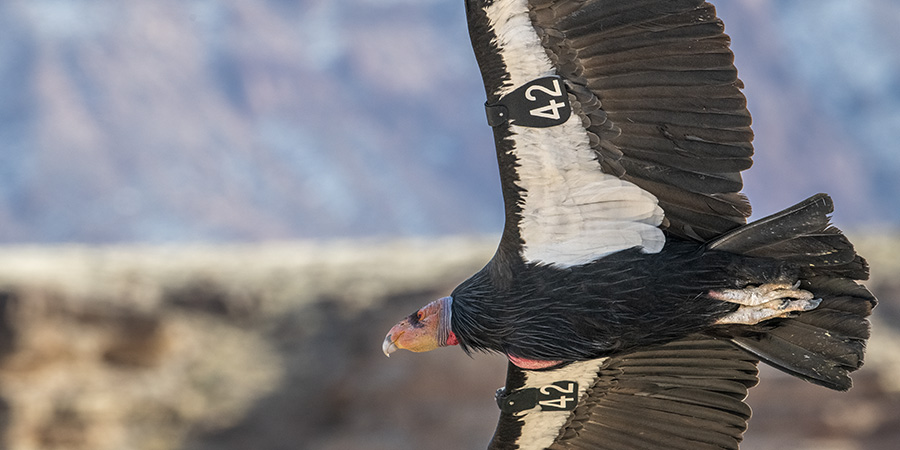
If you’re a teacher, your students might be interested in learning about the animals of the Grand Canyon. The National Park Service offers a great overview, with photographs, detailing some of the 447 known species of birds, 91 species of mammals, 48 species of reptiles, and 10 species of amphibians that call the park home.
The canyon is also home to many rare, threatened, and endangered species. You’ll find a snap shot of the park’s endangered species on our blog and a terrific catalogue of the more than 1,700 plant species found in the canyon on the National Park Service’s website.
New species are sometimes discovered in the canyon, including two cave-dwelling pseudoscorpions previously unknown to science.
You can help protect the Grand Canyon
Thank you for devoting your time and energy to learning and helping others learn about the Grand Canyon. You can stay up to date on the latest Grand Canyon news by joining our email list. Sign up today

